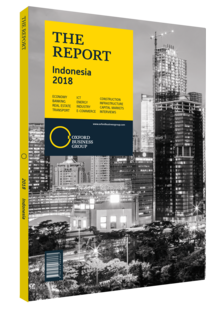Initiatives move to upskill workforce in Indonesia
With expansion being driven by its low-cost workforce, the progress of Indonesia’s manufacturing segment has bolstered employment figures over the years, providing 15.5m jobs and contributing 20.5% to GDP in 2016. With increased investment across a variety of subsectors, employment in the manufacturing sector is expected to grow by 5% in 2017 to a total of 16.3m workers, making the sector the fourth-largest employer behind the agriculture, trade and services sectors, which provide 37.8m, 26.7m and 19.5m jobs, respectively.
SKILLS: In an effort to accelerate production and increase employment rates, the Indonesian Chamber of Commerce and Industry, the Ministry of Industry and other governmental departments have pooled resources to offer new training programmes. For instance, the Ministry of Industry has pledged to build eight polytechnics by 2019 to provide qualifications to workers in the fields of rubber, steel and palm oil. President Joko Widodo has embarked on a series of educational reforms designed to meet the needs of a contemporary Indonesia, with a target of raising per capita incomes from $3500 in 2011 to $14,250-15,000 by 2025. As a result of the combined ministerial efforts, it is estimated that as of 2017 around 60% of the manufacturing workforce has a skills-based certificate.
HIGHER PROSPECTS: The campaign to equip the workforce with skills has led to a rise in foreign investment and job prospects, with more than 4m new jobs created within the manufacturing sector in the last decade alone. However, this figure could be even higher if more foreign investment were channelled into labour-intensive industries, rather than into the capital-intensive industries that foreign investors have traditionally been more drawn to. It is expected, however, that more international manufacturers will set up base in Indonesia as the pool of skilled workers deepens.
In addition, major infrastructure efforts should encourage greater foreign participation and thus generate new jobs. Despite being South-east Asia’s largest energy producer and consumer, 40m locals lack access to electricity. To reduce this deficit, the government launched a fast-track programme in 2015, with a goal of providing 35 GW of power capacity by 2019. While the project has significant challenges to overcome – such as land acquisition and financial issues – the eventual increase in power capacity will promote manufacturing efficiency and lower costs, in turn enticing foreign investors who have hesitated in the past.
LABOUR INTENSIVE: The government’s public investment and structural reform efforts – particularly its measures to improve the investment climate with policy packages and its provision of a sufficient supply of electricity to manufacturing companies – should lead to a major reduction in logistical costs. As a result of more attractive overhead costs, foreign investment and employment prospects will increase within manufacturing, particularly in labour-intensive industries.
With a pro-business government at the helm and plans to invest billions in infrastructure development, the sector is on the rise and has strong potential for further growth. Indonesia’s labour market is set to benefit from policymakers who are eager to entice greater participation from multinational manufacturers within labour-intensive industries, such as textiles. According to statistics from the Ministry of Industry, the textiles industry has the potential to create jobs for 1.5m people, or 10.4% of the industrial sector workforce.
While the textiles industry has been hampered in the past by smuggling and illegal imports, the government has publicly announced firm action against illegal activities, as part of efforts to attract international clothing brands, since their production often requires a large workforce. To Indonesia’s benefit, China’s textiles exports have been gradually declining. For example, China Jiangsu Dongqun Investment Holding Group is set to make an investment of $100m in Indonesia. The potential move may well serve as a green light for other textiles companies that have Indonesia on their radar.
You have reached the limit of premium articles you can view for free.
Choose from the options below to purchase print or digital editions of our Reports. You can also purchase a website subscription giving you unlimited access to all of our Reports online for 12 months.
If you have already purchased this Report or have a website subscription, please login to continue.

